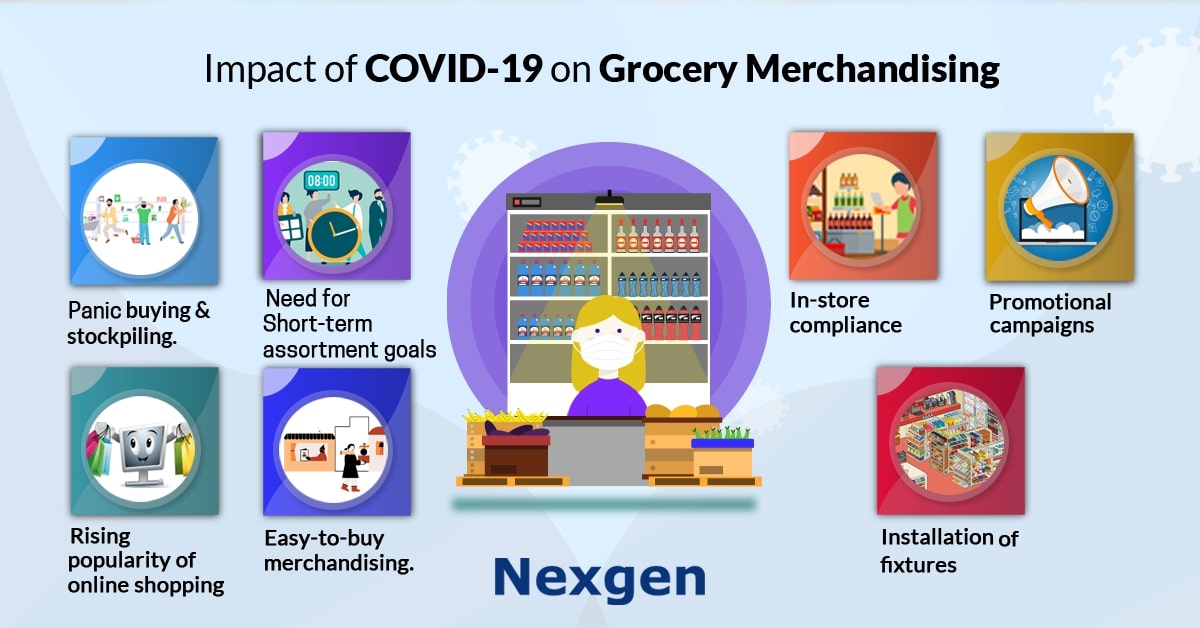2019 has been one of the most challenging years in the history of retail. The spread of COVID-19 worldwide has led to fundamental changes in consumer behavior, demand for basic items, as well as changes in the requirement for social distancing- forcing retailers to adopt new merchandising strategies to respond to rapidly to changing market trends. Current challenges like rise in demand, diverse fulfillment and panic buying have made the decision-making process in grocery merchandising even more complex. For brands and stores that thrive to survive, will need the right technology to plan and implement merchandising strategies quickly and accurately so that they can keep shelves fully stocked. Hence, they are relying on data-driven planograms to redesign and repurpose retail spaces.
Planograms are visual merchandising tools that provide a diagrammatic representation of the store layout with special focus on product placement. Apart from being a visual representation of a store’s aisles, point of sales and displays, a planogram can exactly dictate where each product should be placed to maximize its selling potential. While appropriate product placement and improved sales are the basic reasons why retailers use planograms, there are a number of benefits that a planogram can provide- reduced out of stocks and better inventory control, maximum utilization of every square foot of space, and making better product positioning decisions.
Let us now look at some of the major challenges impacting grocery merchandising and understand how planograms can successfully alleviate these challenges.
1.Focus on short term assortment needs
The national lockdowns declared in many countries have impacted the lives of retailers and consumers alike. Doubt about the availability of products in consumers' minds resulted in panic buying and stockpiling. This sudden surge in demand led to shortage of essential goods and other staples resulting in empty shelves and a disrupted supply chain.
This forced retailers and space planners to abandon the weekly calendar that was prepared in advance and focus more on short-term assortment needs. They relied heavily on planograms to update or modify assortments, take quick decisions and communicate updated merchandising strategies within the organization as well as across multiple store outlets.
2.Rising popularity of online shopping
Demand for online shopping and e-commerce websites skyrocketed since it limits consumer’s exposure to public places. Customers who wished to avoid stores turned to other options like curbside pickup and third-party home delivery services among many others.
However, these new shopping trends have further complicated the merchandising process for retailers. As a result, retailers will need a central platform that accommodates all relevant information so that planograms are accurate both for off-the-shelf shopping and backroom fulfillment. Hence, retailers should move away from historical model of relying on black-and-white schematic planograms and adopt interactive planograms that ensure products are in the right position for both pickers and customers.

3. Establishing in-store compliance
As retailers and suppliers struggled to rapidly make products available to customers, it not only affected the quality of execution but also in-store compliance. Successful retail stores must be able to validate that assortments are merchandised, promotions are set and fixtures are installed correctly.
So how can retailers ensure in-store compliance? The answer is planograms! Planograms allow retailers to achieve compliance by appropriate execution of pre-designed planogram layouts. Additionally, it also allows store staff to analyze, measure, and leverage planning process for better in-store performance.
Overview of Nexgen POG
Nexgen POG is a powerful cloud-based visual merchandising tool. It is designed for quick and easy planogramming. With Nexgen POG, planograms can be created by simply dragging and dropping products from the product library. It is a multi-device compatible software that helps you to create, share and edit your planograms anywhere, anytime. It is designed for creating easy store specific planograms that help boost sales and increase revenue.
Get Your Free Trial Now